
How to Use DC-DC Buck Converter: Examples, Pinouts, and Specs
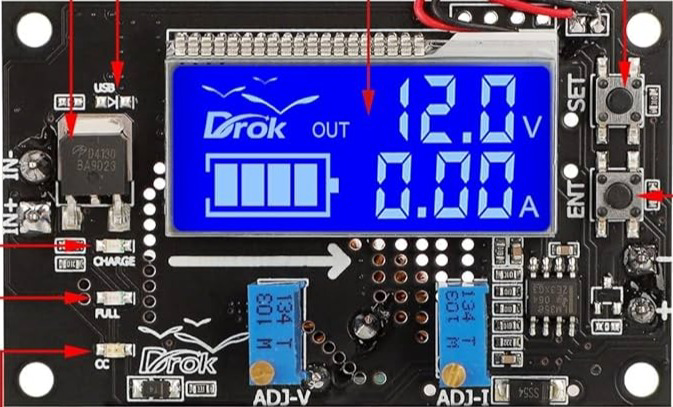
 Design with DC-DC Buck Converter in Cirkit Designer
Design with DC-DC Buck Converter in Cirkit DesignerIntroduction
The DC-DC Buck Converter by DROK is a highly efficient power electronics device designed to step down voltage from a higher level to a lower level. It achieves this through a combination of switching elements, inductors, and diodes, ensuring minimal energy loss during the conversion process. This component is widely used in applications where regulated lower voltage is required from a higher voltage source.
Explore Projects Built with DC-DC Buck Converter
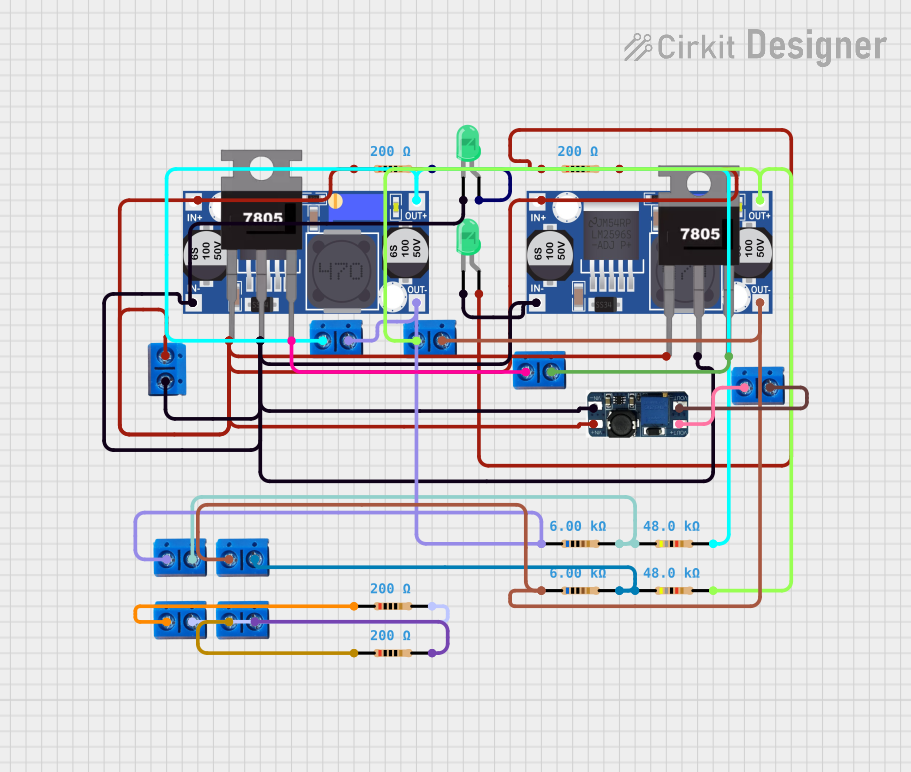
 Open Project in Cirkit Designer
Open Project in Cirkit Designer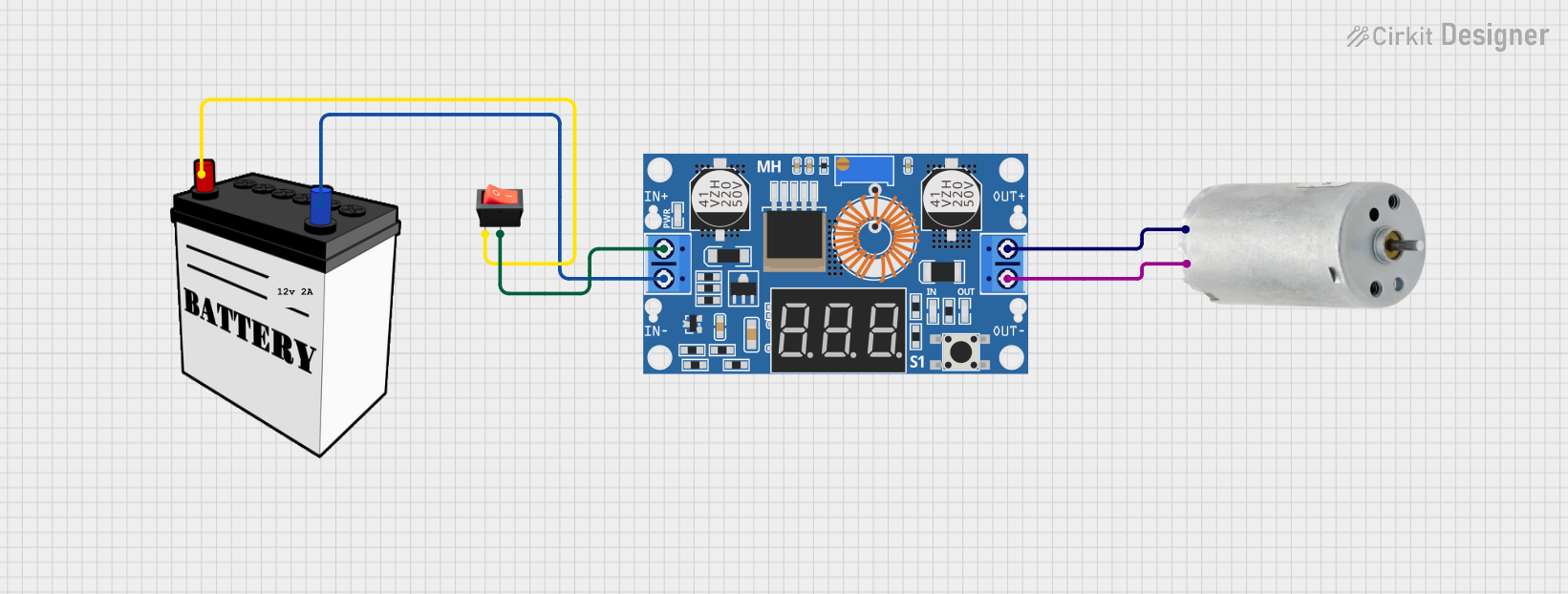
 Open Project in Cirkit Designer
Open Project in Cirkit Designer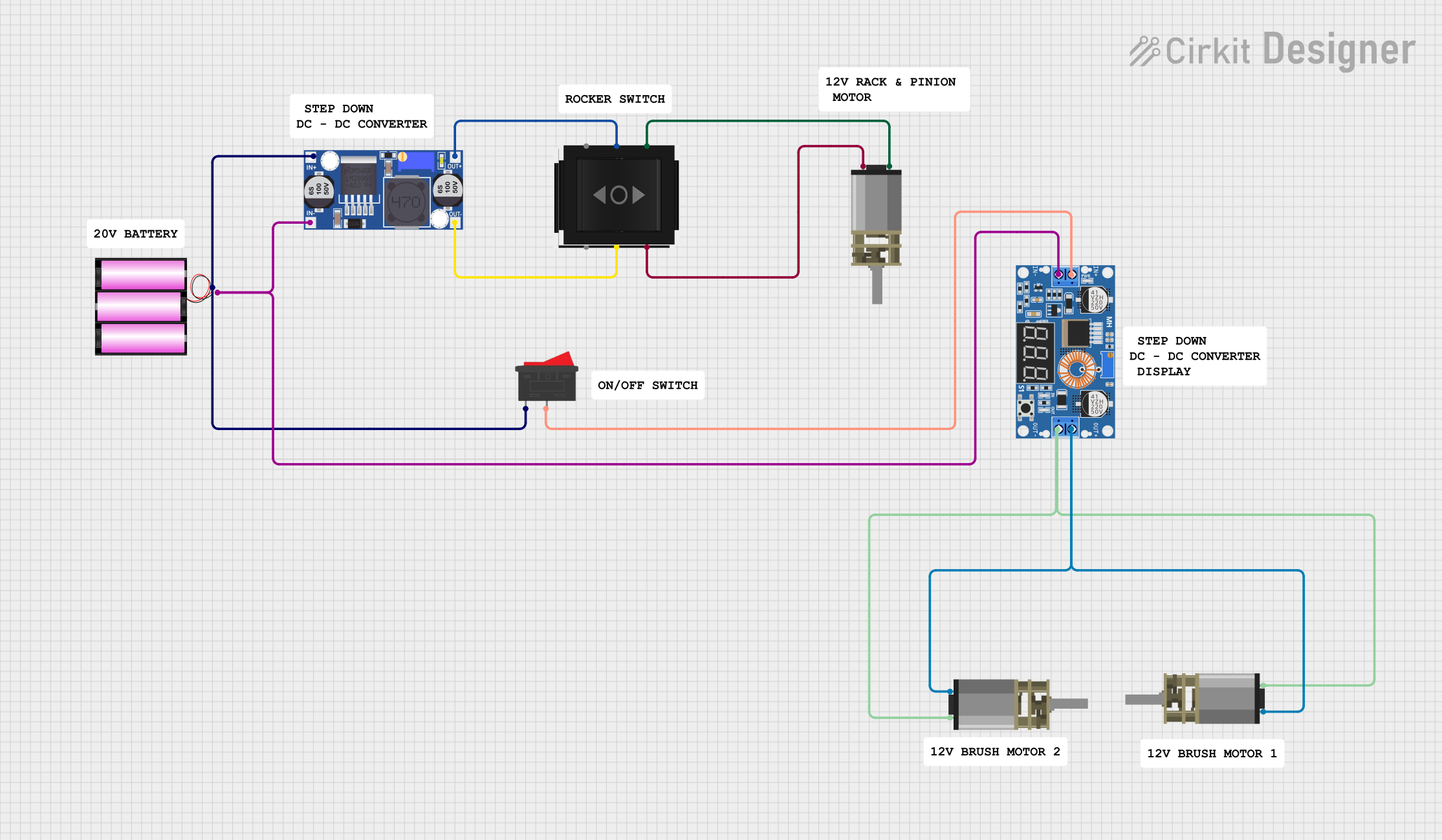
 Open Project in Cirkit Designer
Open Project in Cirkit Designer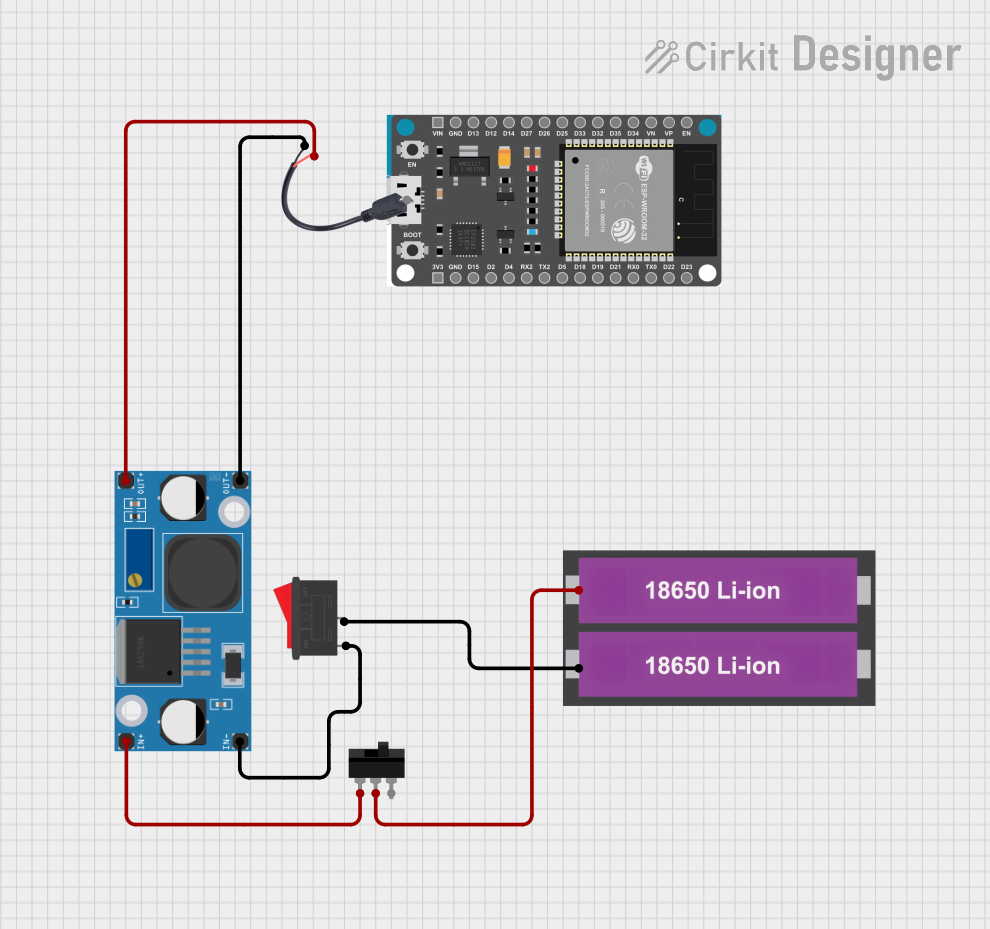
 Open Project in Cirkit Designer
Open Project in Cirkit DesignerExplore Projects Built with DC-DC Buck Converter

 Open Project in Cirkit Designer
Open Project in Cirkit Designer
 Open Project in Cirkit Designer
Open Project in Cirkit Designer
 Open Project in Cirkit Designer
Open Project in Cirkit Designer
 Open Project in Cirkit Designer
Open Project in Cirkit DesignerCommon Applications and Use Cases
- Powering low-voltage devices (e.g., microcontrollers, sensors) from higher voltage sources.
- Battery-powered systems requiring efficient voltage regulation.
- Renewable energy systems, such as solar panels, to regulate output voltage.
- Automotive electronics for stepping down car battery voltage.
- Industrial and consumer electronics requiring stable DC power.
Technical Specifications
Key Technical Details
| Parameter | Value |
|---|---|
| Input Voltage Range | 6V to 36V |
| Output Voltage Range | 1.25V to 32V (adjustable) |
| Maximum Output Current | 5A (with proper heat dissipation) |
| Output Power | Up to 75W |
| Efficiency | Up to 96% (depending on input/output ratio) |
| Switching Frequency | 180 kHz |
| Operating Temperature | -40°C to +85°C |
| Dimensions | 61mm x 26mm x 15mm |
Pin Configuration and Descriptions
| Pin Name | Description |
|---|---|
| VIN+ | Positive input voltage terminal (connect to the higher voltage source). |
| VIN- | Negative input voltage terminal (connect to the ground of the voltage source). |
| VOUT+ | Positive output voltage terminal (connect to the load). |
| VOUT- | Negative output voltage terminal (connect to the ground of the load). |
| Adjustment Potentiometer | Used to adjust the output voltage. Rotate clockwise to increase voltage and counterclockwise to decrease voltage. |
Usage Instructions
How to Use the Component in a Circuit
Connect the Input Voltage:
- Connect the positive terminal of your power source to the
VIN+pin. - Connect the ground of your power source to the
VIN-pin. - Ensure the input voltage is within the specified range (6V to 36V).
- Connect the positive terminal of your power source to the
Connect the Output Load:
- Connect the positive terminal of your load to the
VOUT+pin. - Connect the ground of your load to the
VOUT-pin.
- Connect the positive terminal of your load to the
Adjust the Output Voltage:
- Use the onboard potentiometer to set the desired output voltage.
- Measure the output voltage using a multimeter while adjusting the potentiometer.
Verify Connections:
- Double-check all connections to ensure proper polarity and secure connections.
Power On:
- Turn on the input power source and verify the output voltage is as expected.
Important Considerations and Best Practices
- Heat Dissipation: For currents above 3A, ensure proper heat dissipation by attaching a heatsink or using active cooling.
- Input Voltage: Always ensure the input voltage is higher than the desired output voltage.
- Load Requirements: Do not exceed the maximum output current (5A) or power rating (75W).
- Polarity: Double-check the polarity of all connections to avoid damage to the converter.
- Ripple and Noise: Use additional capacitors at the input and output terminals to reduce voltage ripple and noise.
Example: Using with an Arduino UNO
The DC-DC Buck Converter can be used to power an Arduino UNO from a 12V power source. Below is an example circuit and code:
Circuit Connections
- Connect the 12V power source to the
VIN+andVIN-pins of the buck converter. - Adjust the output voltage to 5V using the potentiometer.
- Connect the
VOUT+pin to the Arduino's5Vpin. - Connect the
VOUT-pin to the Arduino'sGNDpin.
Example Code
// Example code to blink an LED using Arduino UNO powered by the DC-DC Buck Converter
const int ledPin = 13; // Pin connected to the onboard LED
void setup() {
pinMode(ledPin, OUTPUT); // Set the LED pin as an output
}
void loop() {
digitalWrite(ledPin, HIGH); // Turn the LED on
delay(1000); // Wait for 1 second
digitalWrite(ledPin, LOW); // Turn the LED off
delay(1000); // Wait for 1 second
}
Troubleshooting and FAQs
Common Issues and Solutions
| Issue | Possible Cause | Solution |
|---|---|---|
| No output voltage | Incorrect wiring or polarity | Verify all connections and ensure correct polarity. |
| Output voltage is unstable | Insufficient input voltage or high load current | Ensure input voltage is within range and reduce the load current if needed. |
| Overheating | High current draw or inadequate heat dissipation | Add a heatsink or active cooling to the converter. |
| Cannot adjust output voltage | Faulty potentiometer or incorrect input voltage | Check the potentiometer and ensure input voltage is higher than output. |
| High output ripple or noise | Insufficient filtering | Add capacitors (e.g., 100µF electrolytic and 0.1µF ceramic) at the output. |
FAQs
Can I use this converter to power a Raspberry Pi?
- Yes, but ensure the output voltage is set to 5V and the current requirement of the Raspberry Pi is met.
What happens if I reverse the input polarity?
- The converter does not have reverse polarity protection. Reversing the input polarity may damage the device.
Can I use this converter with a solar panel?
- Yes, as long as the solar panel's output voltage is within the input range of the converter.
How do I reduce noise in sensitive applications?
- Use additional filtering capacitors and keep the wiring as short as possible to minimize noise.
What is the efficiency of the converter at low loads?
- The efficiency is typically lower at very low loads but remains above 80% in most cases.
This documentation provides a comprehensive guide to using the DROK DC-DC Buck Converter effectively and safely. For further assistance, refer to the manufacturer's datasheet or contact technical support.